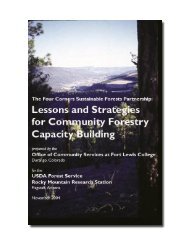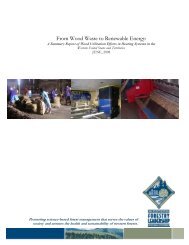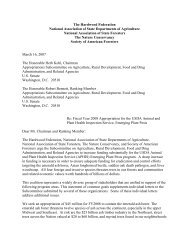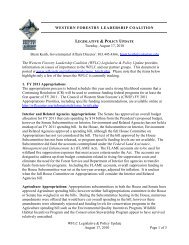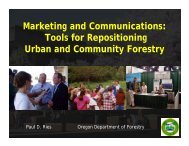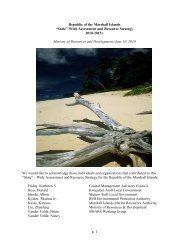Emission Controls for Small Wood-Fired Boilers - Western Forestry ...
Emission Controls for Small Wood-Fired Boilers - Western Forestry ...
Emission Controls for Small Wood-Fired Boilers - Western Forestry ...
You also want an ePaper? Increase the reach of your titles
YUMPU automatically turns print PDFs into web optimized ePapers that Google loves.
11.0 RECOMMENDATIONS FOR FUTURE RESEARCH<br />
A number of factors affect emission rates, such as geographic location, type of fuel burned, firing rate<br />
characteristics, type of combustion technology, and type of add‐on emission control. Additional emission<br />
tests will improve understanding of how these factors affect emission levels. Future emission tests could<br />
be structured <strong>for</strong> wood chip and wood pellet systems as follows:<br />
1. Inlet‐outlet testing <strong>for</strong> particulate emissions (PM10, PM2.5) controlled by ESPs, baghouses and<br />
HEMCs. Particle size distribution should also be measured at the inlet and outlet, in addition to<br />
measuring mass emission rates.<br />
2. HAP emissions in concert with CO and PM2.5. Inlet and outlet testing should be per<strong>for</strong>med <strong>for</strong><br />
particulate HAPs. PM2.5 should be tested because it is considered a surrogate <strong>for</strong> particulate<br />
HAPs. CO should be tested (outlet testing only) because it is considered a surrogate <strong>for</strong> gaseous<br />
HAPs.<br />
3. Stack testing <strong>for</strong> any given site should be expanded to include emissions from the following:<br />
a. Low, medium and high firing rates<br />
b. At least two fuels, such as, wood with bark (bole chips or whole tree chips) and wood<br />
without bark (mill chips).<br />
Attention should also be given to the following:<br />
1. Development of a voluntary universal boiler operator training program <strong>for</strong> obtaining boiler<br />
operator certification.<br />
2. Further development of fuel quality specifications to further establish grades of wood fuels.<br />
12.0 SUMMARY<br />
A number of emission controls <strong>for</strong> small wood‐fired boilers have been evaluated. This study evaluated a<br />
number of Best Management Practices (BMPs – also called work practice standards) and add‐on controls.<br />
While these controls are focused on particulate matter control, their implementation will control<br />
emissions of all types of pollutants, including carbon monoxide, sulfur dioxide, nitrogen oxides, volatile<br />
organic compounds and hazardous air pollutants. Maximizing fuel quality, optimizing combustion<br />
conditions and selecting a well designed add‐on pollution control are the three main categories <strong>for</strong><br />
controlling emissions. Control efficiency and cost effectiveness vary by boiler size, particle size<br />
distribution and type of add‐on pollution control.<br />
Resource Systems Group, Inc.<br />
<strong>Emission</strong> Control Technologies <strong>for</strong> <strong>Small</strong> <strong>Wood</strong>‐<strong>Fired</strong> <strong>Boilers</strong><br />
6 May 2010 Page 26



